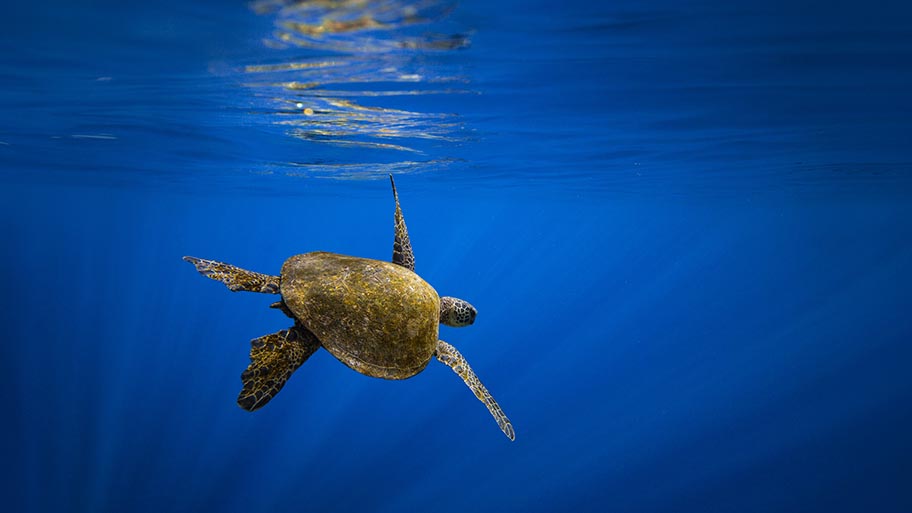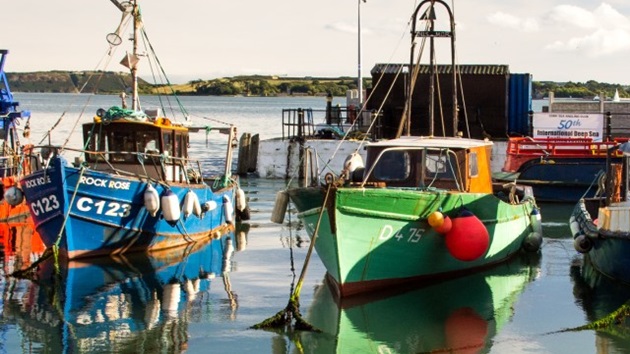Dozens of fisheries certified to the Marine Stewardship Council’s sustainability Standard continue to improve their performance in areas such as bycatch and endangered, threatened, and protected species, even after achieving certification.

Green turtle swimming underwater © istock.com/lindsay_imagery
MSC-Certified Fisheries Continue Improving After Certification
New data released today show that 100 improvements were made by MSC-certified fisheries in 2020 alone. This data underlines how the program incentivizes fisheries to both keep target stocks healthy and pave the way for industry best practice.
Fisheries can take years to meet the MSC Fisheries Standard and become industry leaders in sustainability. However, the story doesn’t end once certification has been awarded. Many fisheries are required to make improvements to maintain that certification.
“To be certified as sustainable, fisheries must reach the rigorous requirements set by the MSC,” says Dr. Rohan Currey, MSC Chief Science & Standards Officer.
“But many fisheries are also given conditions of certification which mean they must make improvements to some of their practices within a specified time frame. In this way, fisheries engaged in the MSC program are incentivized to improve their performance towards global best practice.”
Protecting Endangered, Threatened, and Protected Species
According to the Environmental Protection Agency (EPA):
“Endangered species are those…animals that have become so rare they are in danger of becoming extinct. Threatened species are…animals that are likely to become endangered within the foreseeable future throughout all or a significant portion of its range.”
More than half of the 100 improvements last year relate to endangered, threatened, and protected species, including those made by the Australian Eastern Tuna and Billfish Fishery. The fishery spans the entire eastern seaboard of Australia, from the top of Cape York to the South Australian-Victorian border, and extends 200 nautical miles offshore.
The fishery was first certified in August 2015 for longline albacore and yellowfin tuna and swordfish. The certification came with a condition requiring the fishery to prove that it had reduced its interactions with protected turtles and shortfin mako to insignificant levels—meaning that these interactions would not cause lasting damage to the environment or marine species.
To achieve this, the fishery introduced several tools including circle hooks, de-hookers, and line cutters. To prove that these tools significantly reduced interactions, the fishery implemented electronic monitoring on all its vessels.
These combined efforts made it highly unlikely that either protected species would be harmed, and the condition on the certification was closed.
Another fishery that has made improvements to protect vulnerable species is the Canada Scotia-Fundy haddock fishery. It applied conservation measures around the Southern Scotian Shelf, Bay of Fundy, Gulf of Maine, and Georges Bank where it operates to help rebuild haddock stocks.
The fishery has also reduced its impacts on other species, including cod, white hake, and skate.
Despite its work to rebuild these fish stock levels, the fishery received a condition for its recertification in 2016: it was required to provide evidence that its operations were not preventing the rebuilding of thorny skate stocks.
The fishery introduced many improvements, one of which being a Skate Identification Guide. This guide clearly describes key visual characteristics of eight different skate species, allowing fisheries to identify skate information both at sea and dockside more easily and accurately.
This guide helped the stocks of thorny skate improve, and the fishery’s condition of certification was closed.
Additional Improvements on the Water
Fifteen of the 100 improvements helped enhance fisheries’ understanding and management of impacts on local ecosystems and habitats. These include an Icelandic shrimp fishery’s research into seabed mapping in efforts to avoid causing harm to delicate deep-sea sponge clusters.
Twenty improvements were also made to fishery management and a further 11 to the status of target fish stocks.
These improvements will help protect the marine environment and help make progress against the significant challenges facing our oceans. According to the UN Food and Agriculture Organization, a third of fisheries around the world have been fished beyond sustainable limits, and a further 60% are fished to their maximum capacity.
There is More Work to Be Done
While over 400 fisheries—representing more than 15% of the world’s wild marine catch—are now certified to the MSC Fisheries Standard, more fisheries must commit to sustainable fishing if our global fish stocks and their marine environments are to thrive.
“Unsustainable fishing practices are a serious threat to the biodiversity and productivity of our oceans. Yet we know that with proper management, depleted stocks and damaged ecosystems can recover,” says Dr. Currey.
“Over 400 MSC-certified fisheries around the world are already leading the way in best practice. Often working closely with local agencies and science bodies they also help drive research and innovation – adding to the body of knowledge in fisheries science,” Dr. Currey adds.
“As we enter this crucial UN Decade of Ocean Science, it’s vital that we accelerate collaboration and progress across the globe if sustainable ocean outcomes are to be achieved long-term.”


